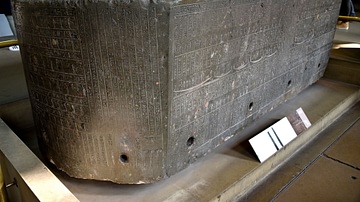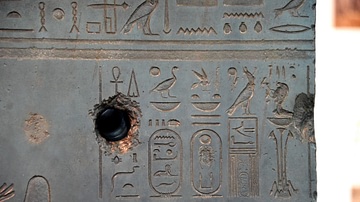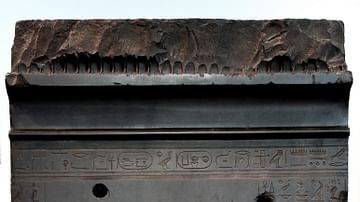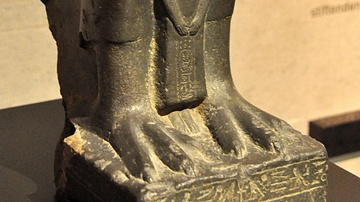Illustration
Detail of the upper margin of the sarcophagus of the last native Egyptian pharaoh Nectanebo II showing the so-called "djed" and tyet" symbols. The djed, a pillar-like symbol, represents the backbone (spine) of Osiris, the god of the underworld and afterlife; it actually reflects stability. The tyet, which resembles an ankh except that its arms are curved down, is connected to goddess Isis, and is called the Knot of Isis. 30th Dynasty, reign of Nectanebo II, circa 360-343 BCE. From Attarin Mosque at Alexandria; originally from Samannud, Egypt. (The British Museum, London).
About the Author
Cite This Work
APA Style
Amin, O. S. M. (2016, July 18). Djed & Tyet. World History Encyclopedia. Retrieved from https://www.worldhistory.org/image/5341/djed--tyet/
Chicago Style
Amin, Osama Shukir Muhammed. "Djed & Tyet." World History Encyclopedia. Last modified July 18, 2016. https://www.worldhistory.org/image/5341/djed--tyet/.
MLA Style
Amin, Osama Shukir Muhammed. "Djed & Tyet." World History Encyclopedia. World History Encyclopedia, 18 Jul 2016, https://www.worldhistory.org/image/5341/djed--tyet/. Web. 29 Jun 2025.








